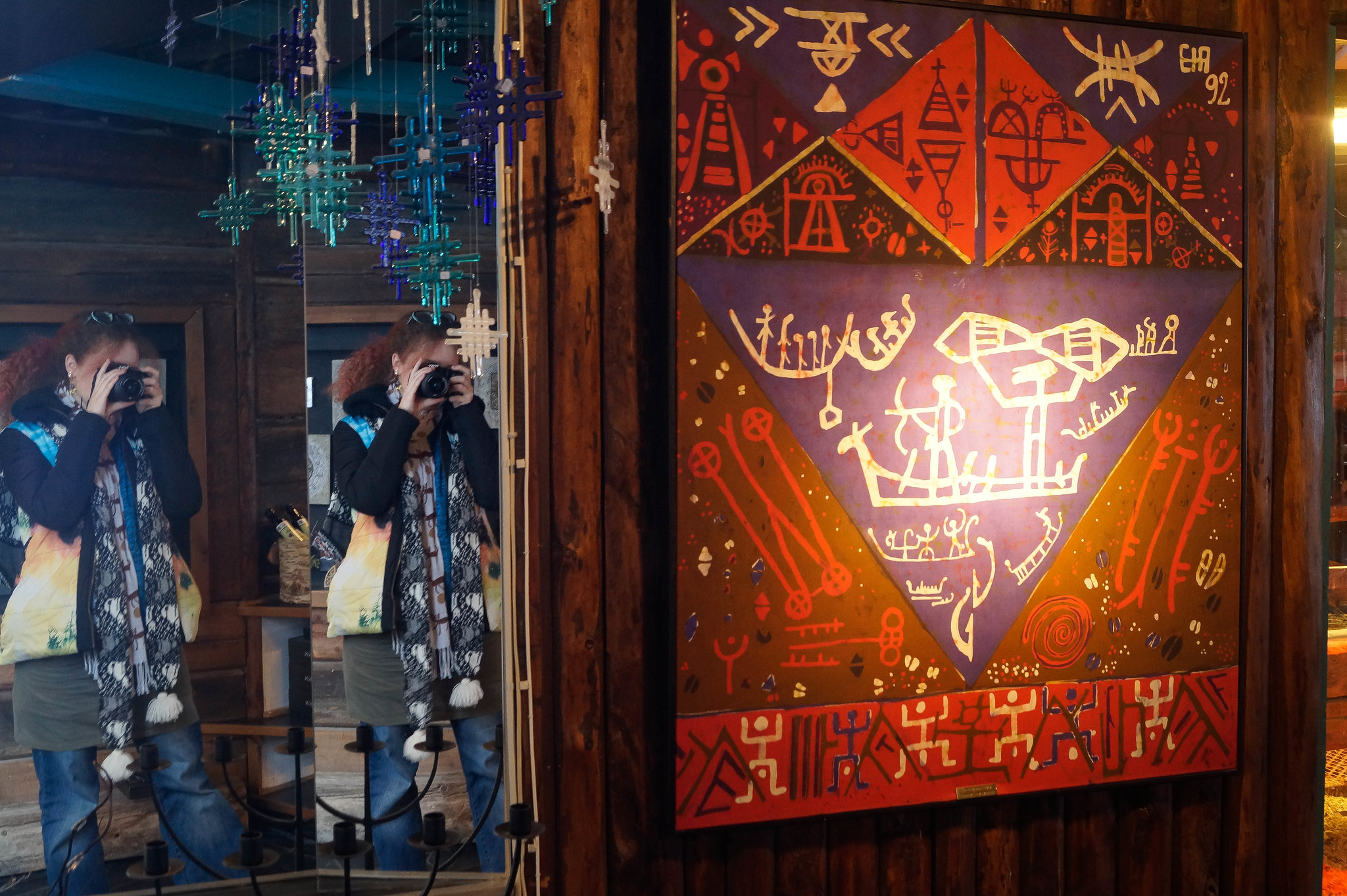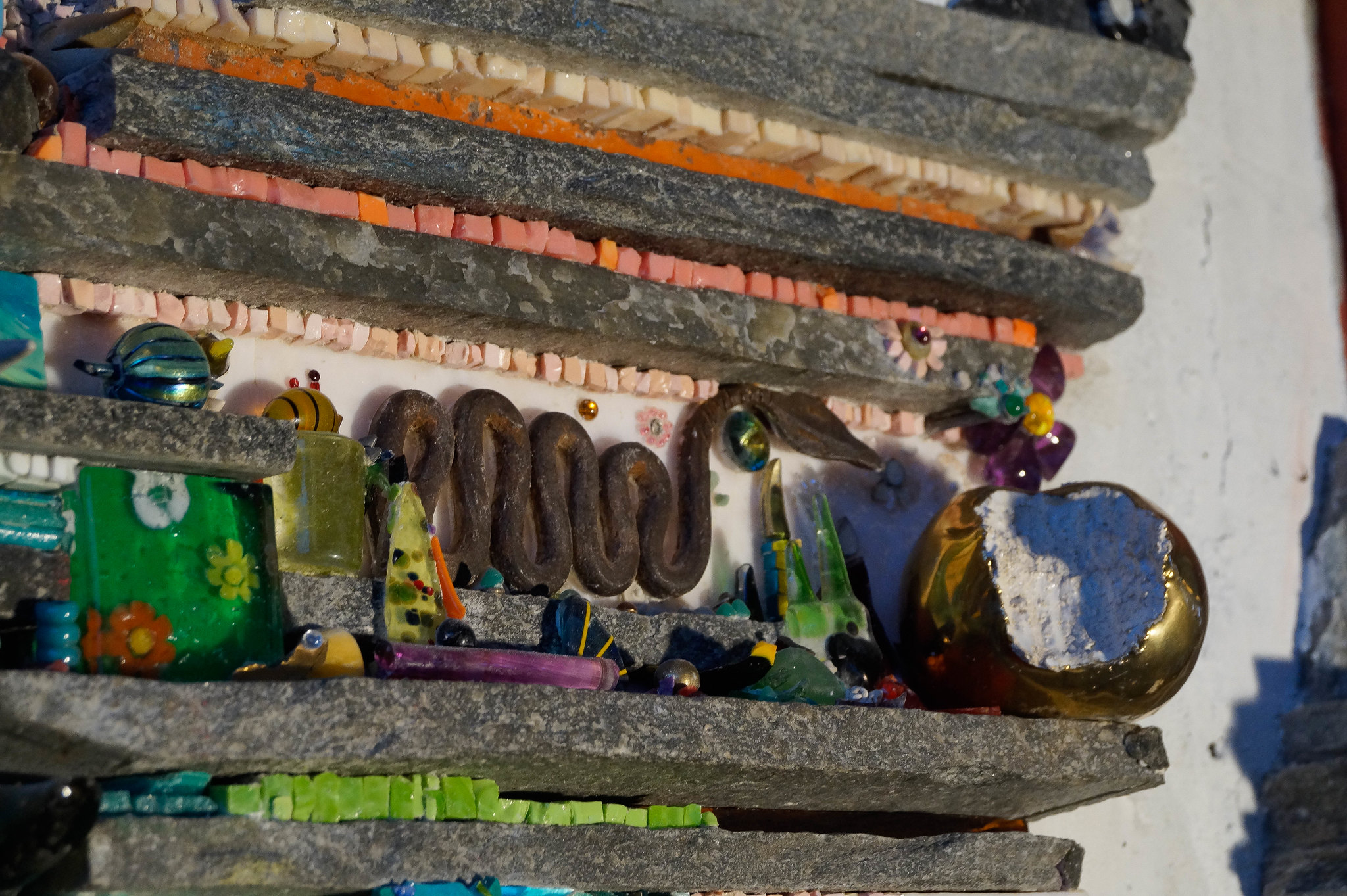The house defies laws of gravity, architecture and space. I am walking through the halls that keep widening and narrowing, filled with smell of brewed coffee and light of the cold winter sun. Norwegians and Sámis love their coffee strong. As I glance outside, it starts snowing again, and the white blizzard is about to envelop and swipe away the entire building. It is middle of February, but people in this part of the world are used to winter darkness and almost forget to marvel at the way snowflakes dance in the wind, the patterns the frost draws on windows, the droplets that crystallize on tree branches.
The house, I swear, is bigger on the inside. It is perched on a slope of the hill, and you can see the town down below. There is nothing extremely remarkable about Kautokeino. The only reason I know about the town is because in my nationalistic days of studying minority languages and stateless nations of Europe, my friend and I stumbled upon ‘Rebellion in Kautokeino’, a film about that one time when the oppressed Sámis had enough of it and showed the Norwegians what they really thought about them.
The house has a giant golden egg out front, covered with a mosaic of tiny fractured gilded pieces. If you ask me I’d bet on a dragon, but there is also a tale in Western folklore about black hen that lays eggs of solid gold and unspecified nutritional value.
‘My husband Frank made it,’ Regine tells me. It took him over a year to put together all the bits and pieces in place to finish the golden egg, this symbolical model of the universe, a magical mythological source of life, or simply a massive post-modernist art object that shines among the white snowdrifts in front of Juhls Silver Gallery in Kautokeino.
Everything inside the house is organic composition of living creatures and art objects, and a whole ecosystem in itself, with adjacent chicken coop providing natural soundtrack to your visual experience.
Still, you can see that the gallery is a work in progress, perpetually renewing itself and searching for stories in the depths of local history. Back in the fifties, there were no roads so far north beyond the Arctic Circle, and building materials had to be carried by the river and then dragged up the hill. But the Sámis have been living in these lands for centuries, long before the modern civilization reached to them with a ‘helping hand’. For Frank and Regine Juhls, once outsiders in these lands, building a house in Kautokeino was like planting a tree on fresh ground. The house grew into the hill, spreading its roots up and down the slope, but its roof still resembles the top of a nomadic tent – a reminder that native inhabitants of this place would come and stay just for a season, until they were ready to lift up and leave, driving the herds of reindeer down south. It was only in the middle of last century when some Sámis started settling down and abandoning old ways of life.
The gallery is about nomads from all over the world. It is about the circles and loops our history makes, about the never-ending movement of human civilizations from place to place in search of a new home, about transition and collective memory. The murals that Regine has been gathering bit by bit and detail by detail, are made of broken pieces of metal tools, cogs, stained glass, beads, rocks, wire, and other random materials.
‘I am in no rush. I have no particular schedule. Sometimes I would get an idea and spend the entire day putting pieces together in a pattern to fit my story. Sometimes I would abandon it for days or weeks with no progress,’ Regine explains her creative process.
The Sámi nomads never had time to develop their own goldsmithing craft. They did have resources, and they did have stories to shape into material form, but the nomadic lifestyle called for constant movement and never allowed the Lapps to have anvils or any tools for fine jeweler’s work. However, especially in the rough nomadic society, a piece of craftsmanship, be it gold or silver work, was always a sign of above-average wealth and authority. The Sámis were trading their goods, such as skins, furs, fish, woodwork, for silverware and jewelry, manufactured by skillful artisans of Southern Scandinavia and Northern Russia. A lot of this jewelry the Sámis perhaps used in burial rituals and as sacrifices to their gods, because of how high was the spiritual value of precious metal.
When Frank and Regine arrived to Kautokeino in the 50s, they became pioneers who brought the craftsmanship that Sámis always wanted but never had, to life. This Sámi Renaissance is taking time. But when you walk around Juhls Silver Gallery, with its broad widows opening a view over Kautokeino through the tangled branches of trees, especially in winter, you realise that all the products of human craftsmanship exhibited under the glass inside the gallery are merely a reflection of natural wonders that lie beyond the glass of those windows. Shimmering crystals of ice that grow from the rooftop are molded into silver earrings, mossy twigs from the forest are turned into twisting silver necklaces, and the dim circle of winter sun splits into dozens of droplets of traditional Sámi brooches.
‘I was not born here, I come from places much more southern than Lapland, and so does my husband. But we found tranquility and inspiration here,’ Regine guides me through the halls of the Gallery that winds like the shell of a snail and makes the building look bigger on the inside. The art and craftsmanship of the North comes in many forms, but it always carries the imprint of powerful nature, the fleeting impressions of snow and ice that will turn into trickling water streams in the summer – and disappear.
For more photos, click here
To visit their official website, go this way


































